Paediatric medial epicondyle fracture management: A national audit.
Dear All,
Any chance you complete lots of audits of medial epicondyle fracture management to be done in the hospitals around your area – please!This is necessary to get the numbers required to justify the RCT that NIHR have announced funding for. I have attached the proforma that about 20 hospitals so far have started with.We need a tight deadline on this – 1st June 2017 – to use the results for the trial application.It would be good to get loads of trainees driving the feasibility for a trial!I don’t know Mike Barrett’s e-mail address, but I guess he would be good at pushing this.Daniel Perry MB ChB(Hons), PhD, FHEA, FRCS (Tr & Orth).National Institute for Health Research (NIHR) Clinician ScientistConsultant Orthopaedic Surgeon | Alder Hey Children’s Hospital, Liverpool, UKSenior Clinical Lecturer | University of Liverpool, UK
Introduction
Medial epicondyle fractures are the third most common fracture to the paediatric elbow, accounting for 12% of elbow fractures in childhood. It is associated with elbow dislocation in up to 50% of cases. Incarceration of the fragment occurs in 30% of dislocations and ulnar nerve dysfunction has been reported as high as 10% of children sustaining the injury.
The management of medial epicondyle fractures is debated. The removal of any incarcerated fragments from the joint is agreed to be an absolute indication for surgery. Elbow dislocation is considered a relative indication for fixation of the fragment. In all other medial epicondyle fractures the merit of open reduction and internal fixation are debatable.
A systematic review of the literature has identified 19 studies that have retrospectively compared surgery versus nonoperative treatment. There was no clear evidence of any differences between surgery or nonoperative management. A randomised controlled trial is urgently needed to determine the clinical effectiveness. NIHR HTA have recently called for such a trial of medial epicondyle fractures.
Audit Standard: There should be no unnecessary variations in clinical care that cannot be borne out by explanatory clinical indicators (National review of elective orthopaedic services in England, Getting it Right First Time (GIRF), British Orthopaedic Association, March 2015).
Purpose of the audit: To determine the degree of variations in the care in the care of children with medial epicondyle fractures, which will help to establish the degree of equipoise for a clinical trial.
Method
Approval
Audit approval will be obtained through the local audit department.
Inclusion criteria:
All paediatric medial epicondylar fractures treated between December 2013-2016.
Age 0-18 years old.
Source:
Patients will be identified using a key word search of the digital radiology reports on the institutional PACS system .
The PACS manager in each NHS trust has the facility to search all digital radiology reports to identify key words and to then pull the reports and patient details. This allows the identification of all conservatively managed medial epicondyle fractures to be identified.
Key Words: “Medial Epicondyle” AND Fracture”
All data required for extraction for this audit is then available via the PACS system at the time of radiograph review. The data extraction form is demonstrated below. (table 1)
Radiology reports will be reviewed, and appropriate radiographs reviewed.
The data extraction form will be completed (Table 1).
Table 1 – Data extraction form.
|
Age (Years and Months) |
|
|
Sex |
|
|
Date of Injury (DD/MM/YYYY) |
|
|
Displacement of fracture (Displaced/ Undisplaced) |
|
|
Associated elbow dislocation (Y/N) |
|
|
Associated incarceration of fracture fragment (Y/N) |
|
|
Management (select one) |
|
|
Conservative |
|
|
Surgical |
|
|
Surgical Management (select one) |
|
|
One Screw |
|
|
Two Screws |
|
|
One K-wire |
|
|
Two K-wires |
|
|
Interval between injury and final radiograph on PACS (Years & Months) |
|
|
Evidence of union on last radiograph (Y/N) |
Results Table (to be shared nationally)
|
31st December ’13 – 31st December ’16 Medial epicondyle fracture treatment |
n (%) |
|
Total medial epicondyle fractures seen (over 3 year period) |
|
|
M:F ratio |
|
|
Mean age male (Years and Months) |
|
|
Mean age female (Years and Months) |
|
|
Number Displaced |
|
|
Number Undispaced |
|
|
Number with elbow dislocation requiring reduction |
|
|
Number with incarceration of medial epicondyle in joint |
|
|
Conservatively managed (total cases): |
|
|
|
|
|
|
Surgically managed (total cases) |
|
|
|
|
|
|
|
|


